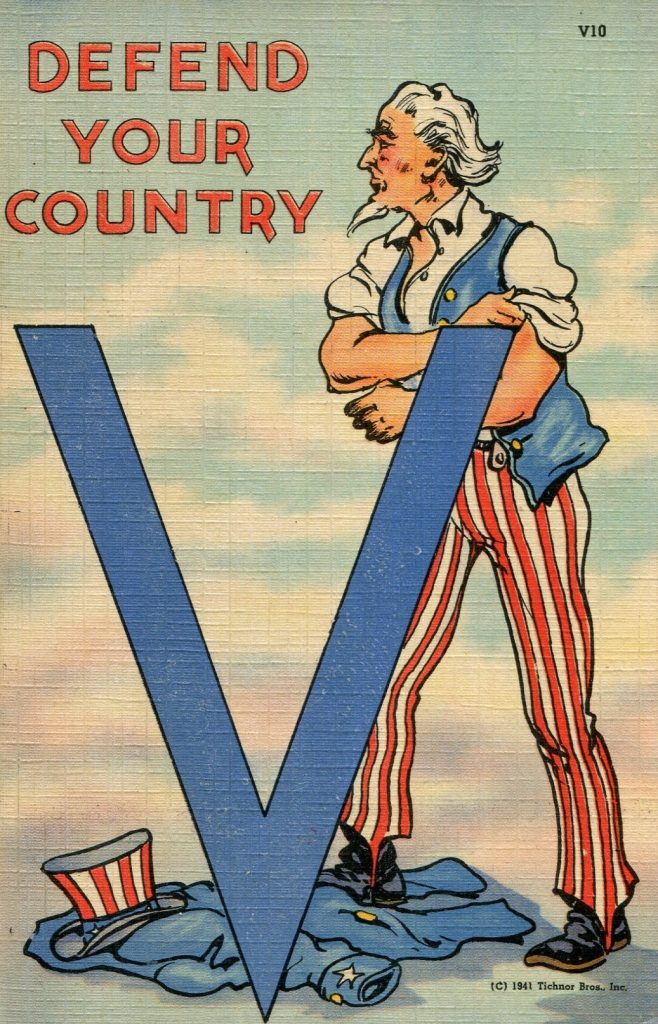Editor’s Staff
“V”
The 22nd letter of the English alphabet is “V.” In its capital letter form it is used in text to abbreviate vector, velocity, verb, verse, verses, very, victory, vide, video, voice, voltage, volume, and vowel. In most instances the V is a capital letter when used as an abbreviation. When V is used as a symbol, it can mean vanadium or volt. With an A, as in VA, the letter-pair can be a postal code, a rank within the United States Navy (vice-admiral), and an abbreviation for a state name. Similar pairings with the letters D, F, G, I, J, P, S, T, V, and X result in several abbreviations and chemical notations, also a mathematical value (an unknown).
In the game Words With Friends, it has been authenticated that 1,438 words begin with the letter V. The only letters that appear less often as initials than V are J, K, Q, X, Y, and Z. “V” as the initial letter of a word does not occur as often as letters such as S and P; each of which are the first letter in nearly 25,000 words. The letter C comes first in about 20,000 words, and A and U begin about 17,000 words each.
With nearly every letter there are words that are fun to say, some of the words that start with V that some people like saying are: vaccinate, vampire, vanilla, vegetable, vehicle, vicissitude, vindicate, voluptuous, and vulcanize.
Postcards in many ways honor the letters of our alphabet. Most of the major card publishers did alphabet sets. Most alphabet sets have 26 cards, some have 24 by combining pairs such as Q and U and X with an E (such as X-tra Edition) or X with a R (as in X-ray). Tichnor Brothers of Boston, Massachusetts, was one company that produced a ten-card set based on just one letter and it was in an especially appropriate year – yes, it was the letter V in 1941. The set was given the number 306 and titled, Victory Series. It had ten designs.
Victory Series Checklist
Each card is numbered on the image (front) side in
the upper right corner. The titles follow:
V1 – Let’s Go Forward Together
V2 – Over the Top For Victory
V3 – Strive for Victory
V4 – Let’s Pull Together
V5 – Keep ‘em Flying
V6 – Victory is our Goal
V7 – Victory
V8 – USA, Liberty…Justice for All
V9 – United We Stand
V10 – Defend Your Country
The Merriam-Webster Dictionary defines “victory”
as the overcoming of an enemy or an antagonist,
or the achievement of mastery or success
in a struggle or endeavor.

V1

V3

V2

V5

V10
V5

V4

V6

V7

V8

V9
The “V” is the only element common in all ten designs. Hues and tones of red, white and blue give each card an ethereal yet patriotic aura. The Morse Code for the letter V (da-da-da-dash) is found on three of the cards and the word “Victory” appears in four of the designs. There are representative icons of the army, navy, air corps, the American eagle, the regular hard-working American citizen, Uncle Sam and the American flag. It seems the only American icon that went unused was a Mom with an Apple Pie.

With all of this there is one component in the history of the letter V that we see frequently, but even today has a very mysterious and mostly unknown origin.
If you surveyed 100 people, it may be that 98 would tell you that it was Winston Churchill who originated the VICTORY hand sign during the second world war. Not true, well not entirely. The two-finger VICTORY hand sign was first popularized by a Belgian named Victor de Laveleye, a lawyer, minister of public education and during the second world war a newsreader for the Belgian radio network – aided by the British Broadcasting Corporation – that transmitted news programing into Nazi occupied Belgium.
As part of Laveleye’s January 14, 1941, broadcast he suggested using the V sign as a rally signal because the letter V was the initial letter of victoire (French), vrijheid (Dutch), and victory (English) – the three languages used by the BBC. The V-sign campaign was instantly popular and was later adopted by Churchill. The only unfortunate part of the story is that Churchill often used it the wrong way around with his palms facing inward which in many parts of the British commonwealth was (and is) a vulgar insult much like the middle-finger salute.
In the years that followed (the 1950s and ‘60s) Churchill was frequently mimicked by American Presidents Eisenhower and Nixon.
So, the world-goes-on and it should be remembered that in our world where political correctness is not only expected but demanded, that we need to be as careful in how we sign to people as we are in how we speak to them.

No comments:
Post a Comment